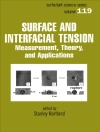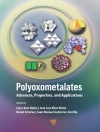Aquatic Contamination
Authoritative resource presenting techniques and technologies to sustainably neutralize environmental contamination in aquatic plants, microorganisms, and more
Two thirds of the Earth is covered with aquatic habitats that play a key role in stabilizing the global environment and providing a wide variety of services to increasing human needs. Nevertheless, anthropogenic activities are rapidly destroying the quality of both fresh and marine waters globally, due to excessive use of chemicals, fertilizers and pollution from suburban and industrial areas eventually making their way into the aquatic world.
Aquatic Contamination: Tolerance and Bioremediation presents the broader spectrum of biological applicability of microbes with better understanding of cellular mechanisms for remediation of aquatic contaminants. The book also focuses on practices involved in molecular and genetic approaches, necessary to achieve targets of bioremediation and phytoremediation to solve global water contamination problems. Such approaches pave the way for the utilization of biological assets to design new, efficient, and environmentally sound remediation strategies by inculcating genomic techniques at cellular and molecular levels with model assessment.
Aquatic Contamination provides a comprehensive background for readers interested in all perspectives of the contamination of aquatic environs. It covers various research aspects which are being carried out globally to understand simulation models in the assessment of xenobiotics, role of genomics, transgenic plants, and microbial enzymes for degradation and removal of toxic substances in aquatic environs.
Key features include:
* Extensive coverage of interactions between plants, metals and microbes including the influence of biotic and abiotic factors
* Comprehensive discussion of the details of molecular mechanisms from assimilation to detoxification levels
* Exploration of the enzymatic approaches of potential plants acting as hyper-accumulators for contaminants in aquatic environs
* Details of sustainable tools such as transgenic plants for the manipulation of important functional microbial genes to achieve higher certainty of bioremediation
* Details of advances in tools and models like micro-arrays and simulation models for the complete assessment of xenobiotic compounds from cellular to degradation hierarchies
Aquatic Contamination: Tolerance and Bioremediation will be substantially helpful to environmentalists, microbiologists, biotechnologists and scientists, providing essential information on various modern technologies for the remediation of contaminants in aquatic ecosystems.
قائمة المحتويات
1 Emerging Techniques for Treatment of Wastewater
2 Aquatic Ecosystems and Health Threats:
3 Case Study on the Nickel Pollution in Gölbasi Lake in Hatay – Turkiye
4 Correlation Between Water Quality and Aquatic Animal: A Special Reference to the Ichthyofauna of River Sindh in Kashmir
5 Mechanism of heavy metal-induced stress and tolerance
6 Biotechnology for sustainable remediation of contamination of wastewater Novel trends of Biotechnology in Wastewater Treatment
7 Role of free-floating macrophytes in the abatement of disturbed environments
8 Enzymatic approach for phytoremediation
9 Phyto-Metalloproteins and Restoration of Freshwater Ecosystems
10 Phytoremediation-The way forward
11 Biotechnological advancements in phytoremediation
12 Phytoremediation of Pesticides and Heavy Metals in Contaminated Environs
13 Biotechnological Interventions for Removal of Heavy Metals and Metalloids from Water Resources
14 Microbial biofilms – pollutant load suppressor
15 Recent Advances in the Biodegradation of Petroleum Hydrocarbons: Insights from Whole Genome Sequencing
16 Green Synthesized Nanomaterials as Tools to Remediate Aquatic Pollution
17 Nanotechnology-Based Applications: A Valuable Tool for Wastewater Clean-up
18 Reliability on Nanoscience: a valuable cleaning tool for wastewaters
19 Transgenic plant technology and its role in Bioremediation
20 Comprehensive note on Various Waste Water Treatment Strategies
21 Case studies of aquatic contamination and bioremediation
عن المؤلف
Rouf Ahmad Bhat, Researcher, Department of School Education, Jammu and Kashmir, India.
Gowhar Hamid Dar, Assistant Professor, Department of Environmental Science, Sri Pratap College, Higher Education Department, Cluster University Srinagar, Jammu and Kashmir, India.
Fernanda Maria Policarpo Tonelli, Researcher, Pitágoras College, Divinópolis Unity, Brazil.
Saima Hamid, Researcher, University of Kashmir, Jammu and Kashmir, India.












